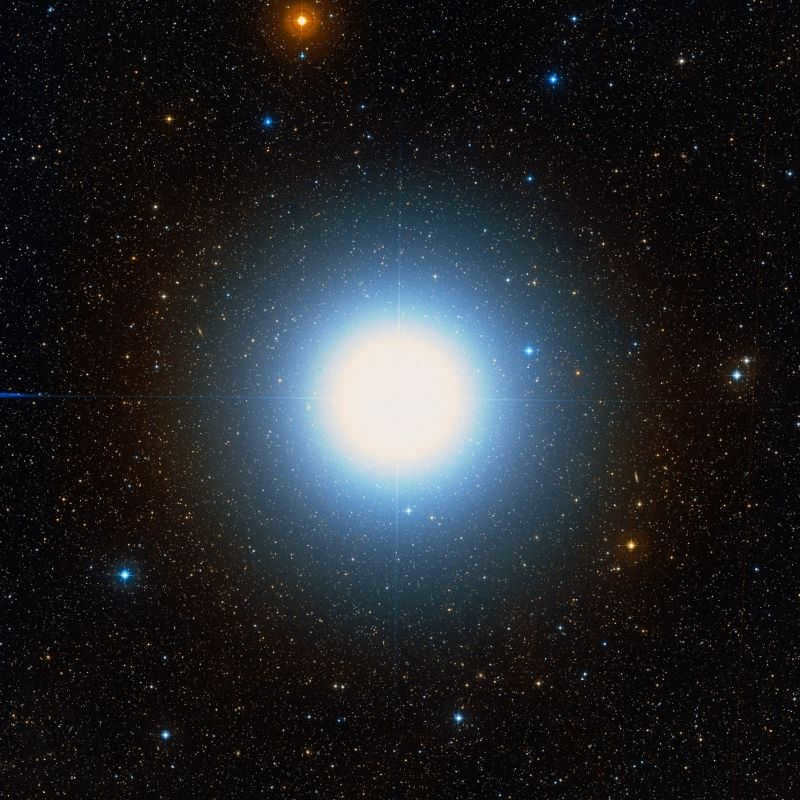
The life cycle of stars comprises a series of phases during which celestial bodies tirelessly progress towards their inevitable conclusion, transforming into spectacular supernovae or fading into the enigmatic abyss of black holes over the span of millions and billions of years.
Basic details
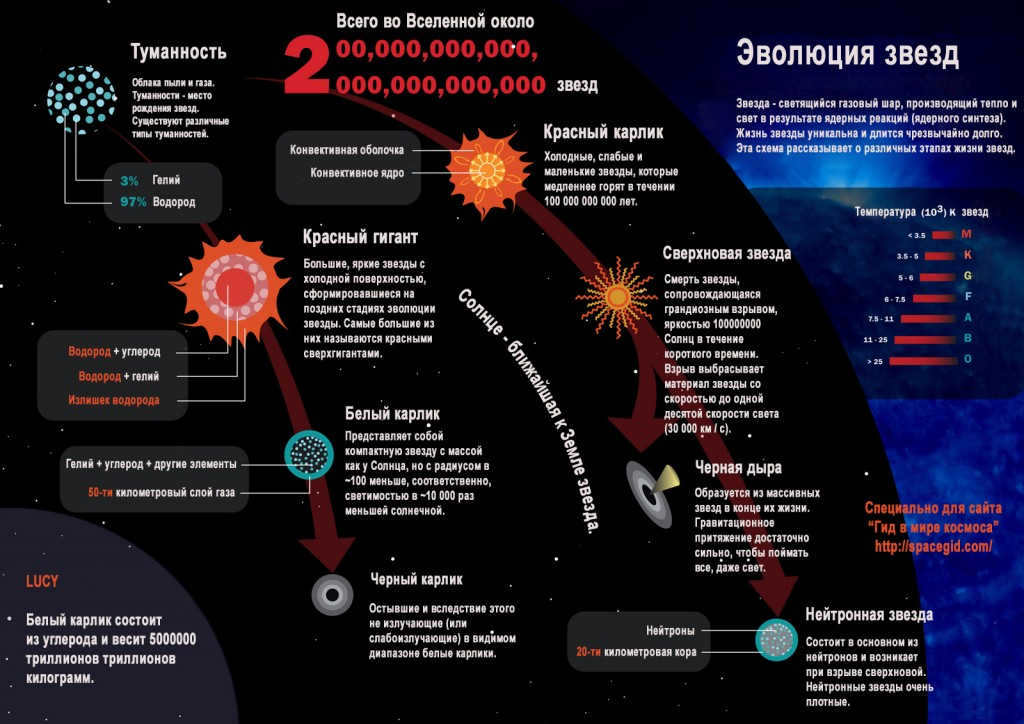
The lifespan of a star, regardless of its type, is an extraordinarily lengthy and intricate process, accompanied by cosmic-scale phenomena. Its multifaceted nature is impossible to fully comprehend and investigate, even with the entire arsenal of modern scientific methods. However, based on the unique knowledge accumulated and processed over the entire history of terrestrial astronomy, we gain access to valuable layers of information. This enables us to establish connections between the sequence of events in the life cycle of stars and develop coherent theories to model their evolution. What are these stages?

Make sure you don’t overlook the captivating interactive application called “Life Cycle of the Stars”!
Chapter I. Protostars
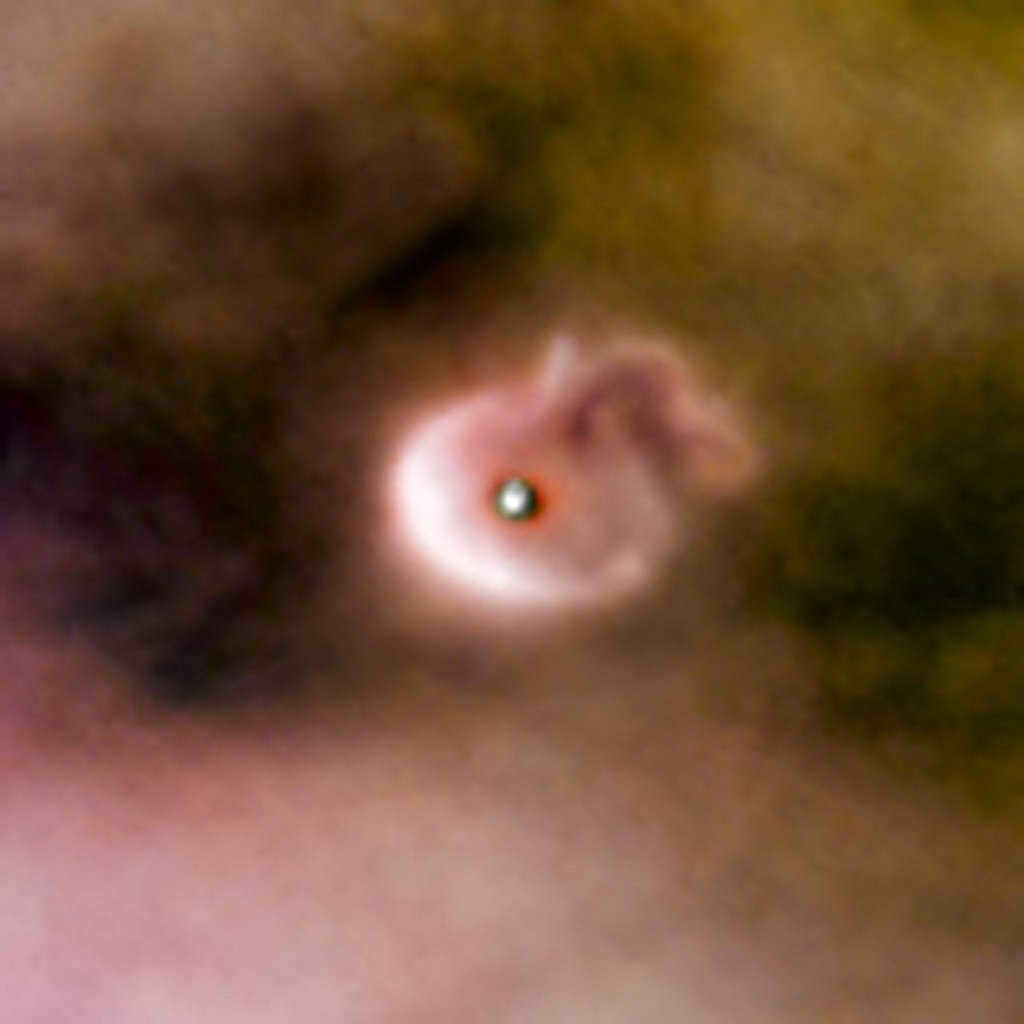
A protoplanetary disk encircles a newly formed solar system in the Orion Nebula.
The life cycle of stars, like all entities in the vastness of the universe, commences with their birth. This occurrence begins within the formation of an immensely vast cloud, from which the initial molecules materialize, hence the term molecular formation. At times, another phrase is also employed, explicitly unveiling the essence of this process – the cradle of stars.
A future star starts to form only when there is an extremely rapid compression of its constituent particles with mass, known as gravitational collapse, due to insurmountable circumstances occurring in a cloud. This compression is caused by a burst of gravitational energy, some of which compresses the gas molecules and heats up the parent cloud. As a result, the transparency of the cloud gradually diminishes, leading to increased heating and pressure in its center. The final stage of the protostellar phase involves the accretion of matter onto the nucleus, causing the nascent star to grow and become visible as the pressure from the emitted light pushes away the surrounding dust.
Discover the protostars within the Orion Nebula!
Presenting an immense panorama of the Orion Nebula, derived from images captured by the Hubble telescope. As one of the nearest and most expansive star nurseries, this nebula offers a unique opportunity to locate protostars. Thanks to the exceptional resolution of this panorama, you can easily identify these nascent stars.
Chapter II. Early stellar evolution
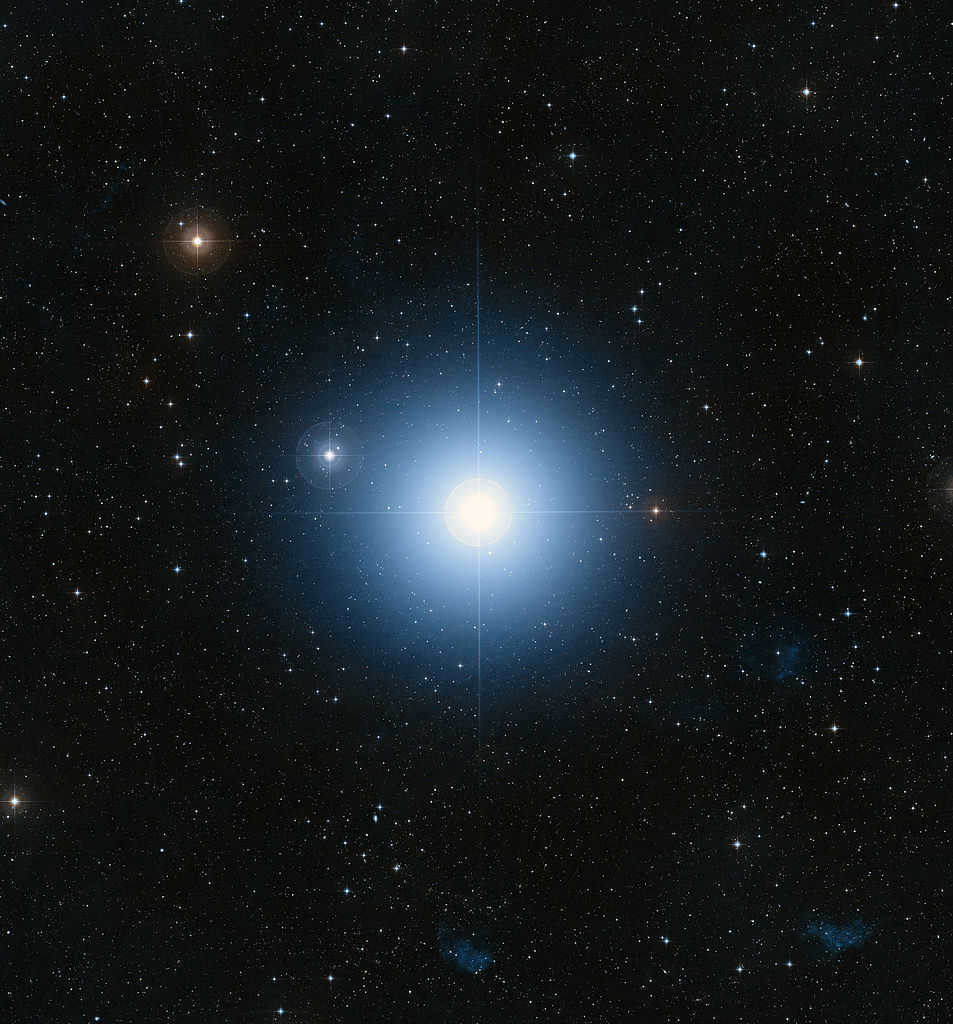
Fomalgaut, an image taken from the DSS catalog, reveals the presence of a protoplanetary disk encircling this particular star.
Episode III: The Flourishing of a Star’s Life Cycle
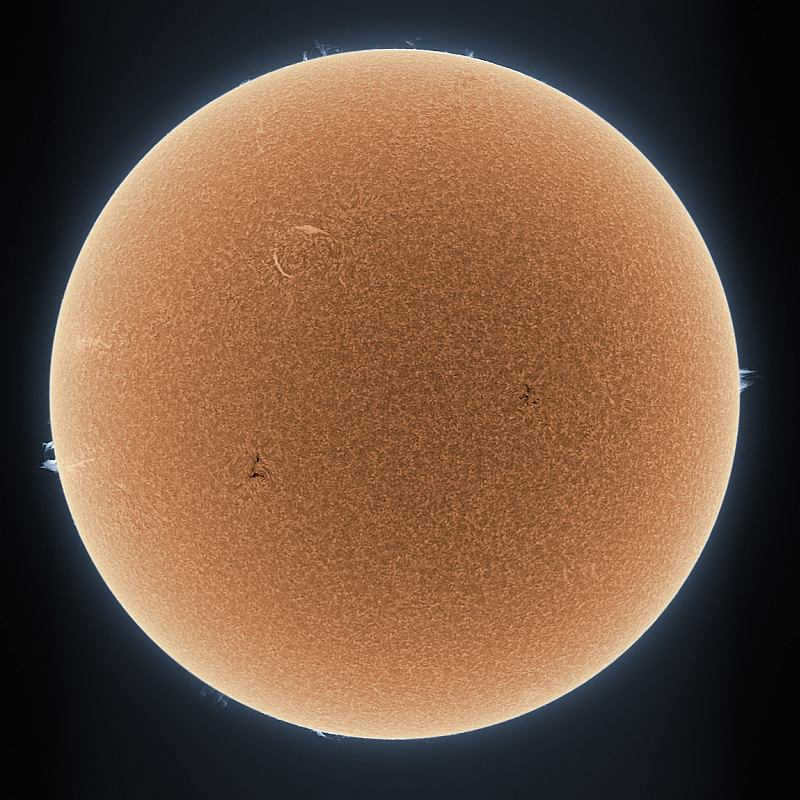
Here is a stunning image of the Sun captured in the H alpha line. This remarkable photograph showcases our star in all its glory, shining brightly in the prime of its life.
During the course of their existence, celestial bodies can exhibit a wide array of characteristics including various colors, masses, and sizes. They can range in color from shades of blue to hues of red, and their masses can be significantly smaller than that of the Sun or more than three hundred times greater. The primary phase in the lifecycle of stars, known as the main sequence, typically lasts for approximately ten billion years. At the end of this phase, the core of the celestial object depletes its hydrogen supply, marking the transition to the next stage of its life. As hydrogen resources become exhausted in the core, thermonuclear reactions cease. However, during the subsequent collapse of the star, newly initiated compression triggers thermonuclear reactions involving helium. This process results in a remarkable expansion of the star, leading to its classification as a red giant.
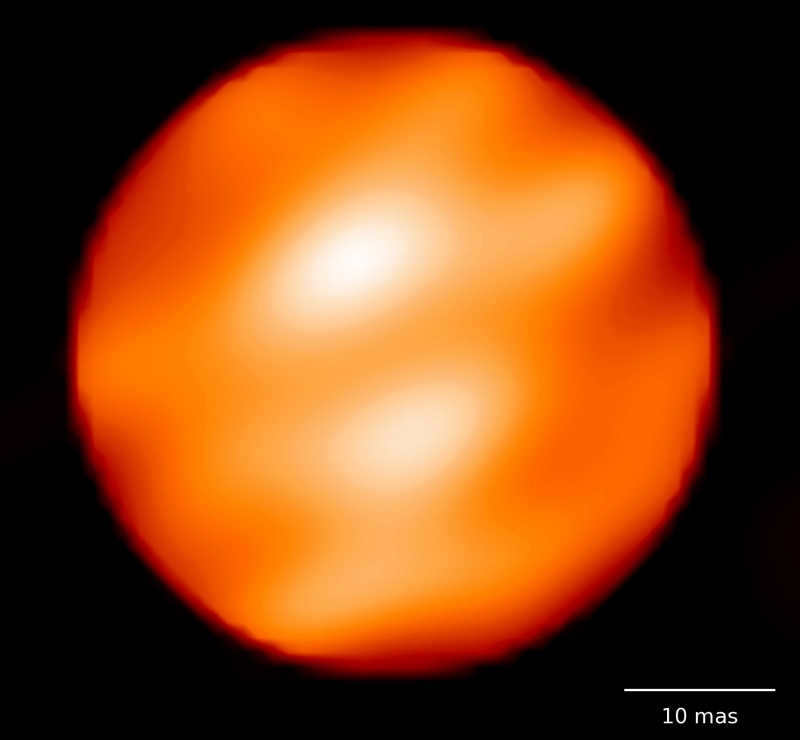
This is an image of the disk of Betelgeuse captured by the Hubble telescope.
There are several categories of old stars, just like young ones: low-mass, medium-sized, supermassive stars, white dwarfs, neutron stars, and black holes. The behavior of objects with small mass in the final stages of their existence is still not fully understood. These phenomena are theoretically described using computer modeling, rather than being observed directly. When carbon and oxygen are completely burned out, the star’s atmospheric envelope expands and its gas component is quickly lost. In the final stage of their evolution, stars are compressed and their density increases significantly, becoming a white dwarf. This is followed by a phase as a red supergiant. The last phase in the life cycle of a star is its transformation into a neutron star, which occurs through intense compression. However, not all stars go through this transformation. Some, especially those with larger parameters (over 20-30 solar masses), collapse and become black holes.
Fascinating information about the life cycles of stars
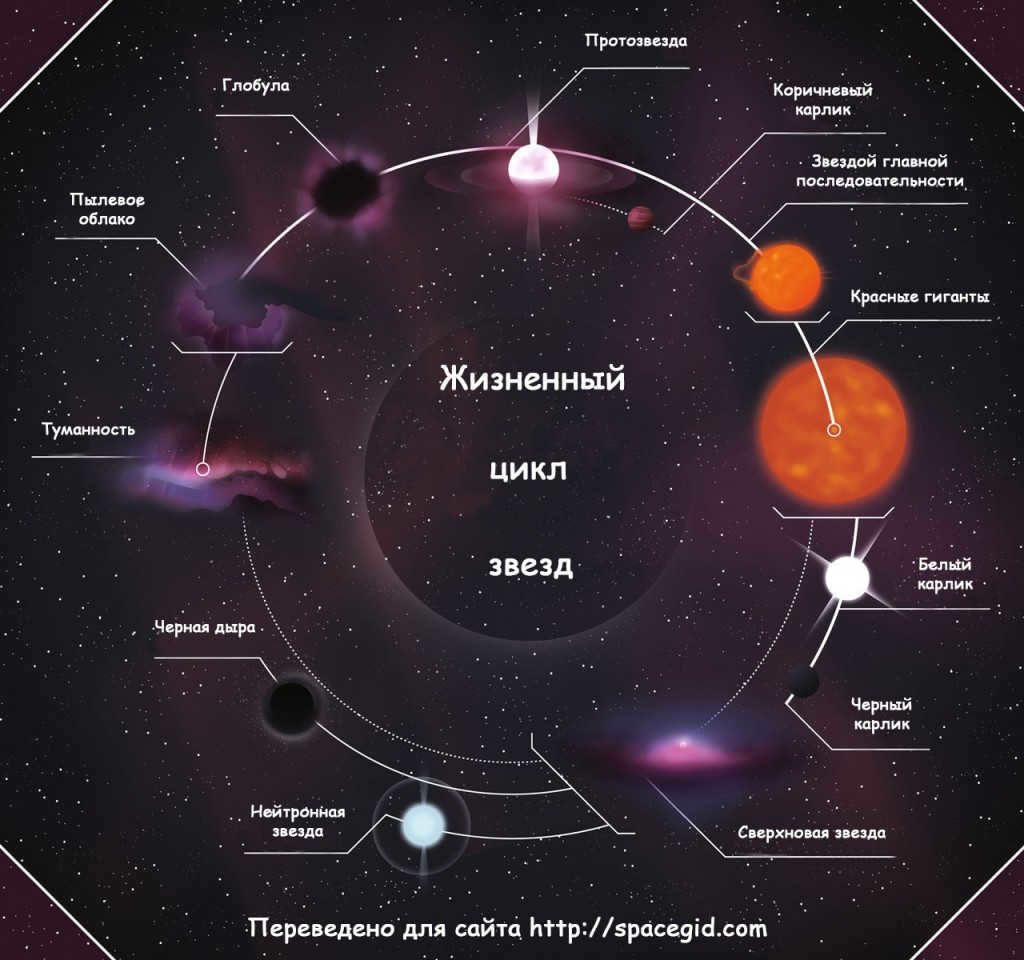
One of the most intriguing and notable facts about the life cycle of stars in the universe is that the vast majority of celestial bodies are currently in the red dwarf stage. These stars have much smaller masses compared to the Sun.
Another fascinating detail is that the magnetic pull of neutron stars is billions of times stronger than the gravitational force of Earth’s stars.
The impact of mass on a star
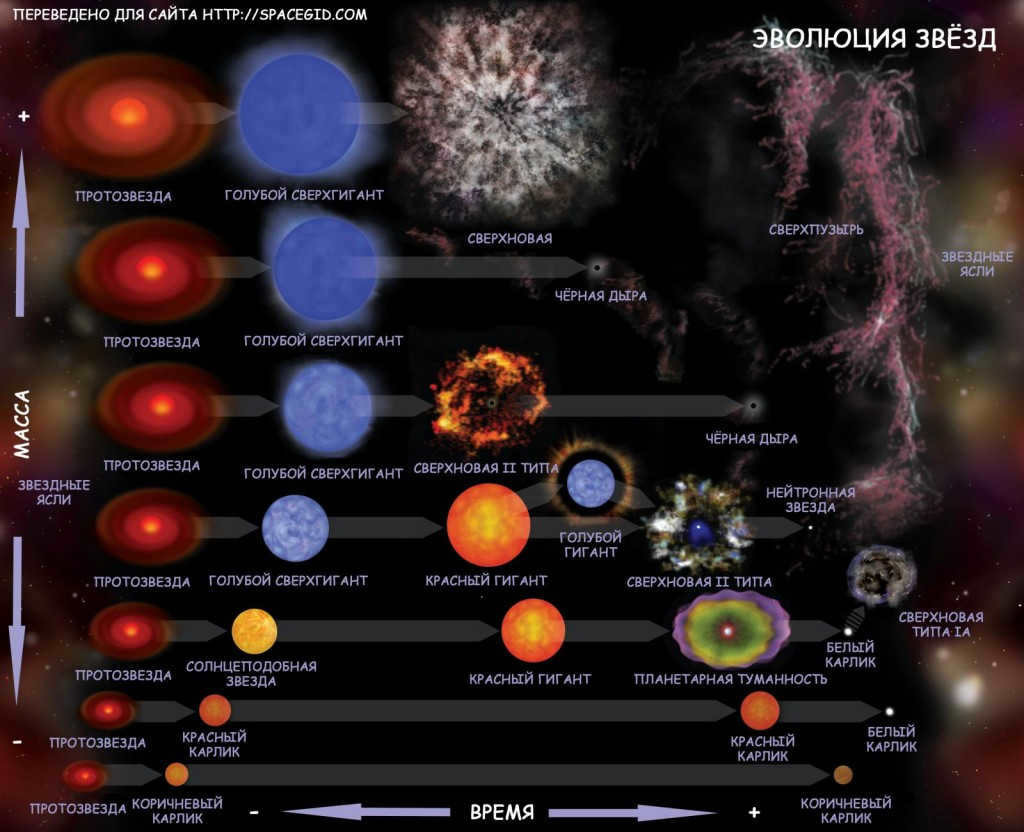

The trajectory of a star based on its mass
Another equally fascinating piece of information can be referred to as the lifespan of the largest known types of stars. Because their mass is hundreds of times greater than that of the Sun, their energy release is also significantly higher, sometimes even millions of times greater. As a result, their lifespan is much shorter. In certain cases, they only exist for a few million years, compared to the billions of years that low-mass stars live.
Another intriguing fact is the contrast between black holes and white dwarfs. It is interesting to note that the former are formed from the most massive stars, while the latter, on the other hand, arise from the smallest ones.
If you enjoy this post, why not share it with your friends?

Universe
Envision a planet, dim and chilly, adrift in the immense emptiness of the cosmic night. Is it possible for life to have originated and endured in such a inhospitable realm? The response is clear. Absolutely not.
While life does thrive on Earth in the most shadowy crevices and deepest valleys, it is sunlight that has been the crucial factor in the development and prosperity of life on Earth. And our Sun happens to be the nearest star to us.
Stars and Planets
Although we can envision the Earth as a solitary world without sunlight, this notion would be fundamentally incorrect. Planets, by definition, are celestial bodies formed from dust that surrounds a star. In other words, planets cannot come into existence on their own. It is a well-established truth that the existence of plant and animal life is intricately connected to the life of stars. We owe our very existence not only to our own sun, but also to those stars that existed in the distant past and are no longer present.
Fascinating fact: the iron in your bloodstream, the calcium in your teeth, and the nickel in your pocket were all created in the depths of faraway stars.
At what time did the initial stars emerge?
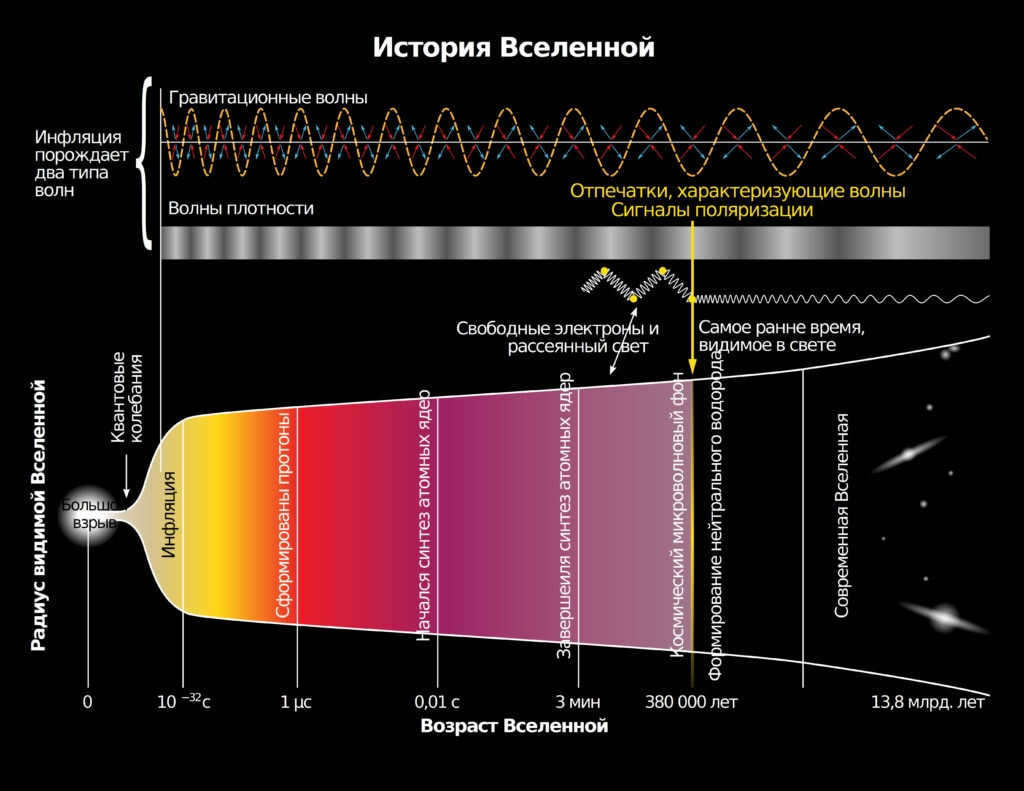
Stars existed prior to the emergence of planets and life. The initial stars came into being 12 to 15 billion years ago, during the early stages of our universe. Stars, similar to humans, experience a life cycle that involves birth, aging, and eventual death. Throughout their lifespan, stars gather elements from their surroundings and generate new elements within their core. A youthful star accumulates hydrogen until it reaches its middle age, at which point helium is produced through nuclear fusion reactions. When the hydrogen supply is depleted, the star utilizes helium atoms to create carbon.
The existence of stars
As time progresses, stars undergo a remarkable transformation within their cores, generating progressively heavier elements such as oxygen, neon, magnesium, silicon, and sulfur. After countless millions or even billions of years, stars eventually deplete their nuclear fuel reserves. Smaller stars typically undergo a calm demise. However, giant stars often undergo a spectacular explosion before their eventual demise, illuminating the skies so brightly that they can be seen during daylight hours. The resulting explosion propels the synthesized elements from the star’s core out into the vast expanse of interstellar space. These elements then become part of the cosmic cloud of gas and dust, which traverses through the depths of interstellar space.
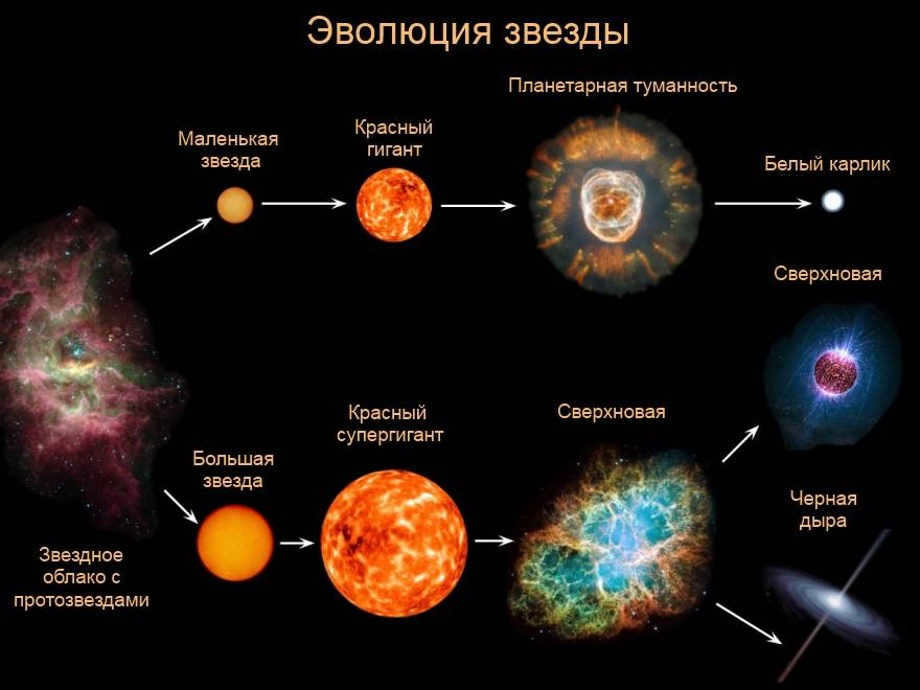
In some cases, under favorable conditions, a new star and its planetary system can form from such a cloud of gas and dust. Our own Sun, along with its nine planets including Earth, was created from a similar cloud. Therefore, the elements that make up our bodies – such as the iron in our blood, the calcium in our teeth, and the nickel in our pockets – were actually created inside a distant star. While this distant star provided Earth with the necessary chemical elements for life, it is our own Sun that provides the energy needed for life to exist on our planet.
The Earth’s atmosphere was penetrated by the radiation of the young Sun, resulting in the formation of clouds and the occurrence of lightning. Scientists believe that these lightning strikes, combined with ultraviolet radiation, played a role in the creation of organic molecules, including amino acids, which are the building blocks of proteins, in the ancient ocean. Proteins serve as the foundation of life, although the exact process by which the first living organisms emerged remains unknown.
It is worth noting that shooting stars, meteorites, and asteroids are distinct entities with different characteristics. To learn more about them, including detailed descriptions, photos, and videos, continue reading.

Once, life emerged as a result of solar energy and continues to exist by harnessing the power of the sun, much like a car relies on the energy derived from burning gasoline to move forward. Plants, for instance, directly utilize sunlight photons to convert water and carbon dioxide into carbohydrates through the process of photosynthesis. Humans and animals, on the other hand, rely on the oxygen released by plants during photosynthesis to breathe, while also consuming plants for energy. Additionally, animals also consume other animals. Ultimately, it all traces back to the celestial bodies known as stars.
If you come across any errors, kindly highlight the affected text and press Ctrl+Enter.

Within this lesson, we will be introduced to the processes of stellar birth and death, as well as the formation of galaxies. Our focus will shift towards addressing one of the most challenging inquiries – the origin of our universe, the events that occurred billions of years before the Earth’s existence, and the future prospects for our universe. Throughout this lesson, we will explore the prominent theories that currently explain the birth and progression of the universe.

Currently, it is not possible to view or share the instructional video with students
In order to access this and other video lessons included in the package, you must add it to your personal account.
Experience amazing functionalities


Outline of the Lesson on “The Origin and Evolution of Galaxies and Stars. Evolution of the Universe.”
“Everything is in a constant state of flux, nothing ever truly disappears.”
During this discussion, we will explore the process of star formation, their lifespan, and eventual demise, as well as the dynamic nature of the universe.
The life cycle of the sun is a unique phenomenon. It originated from the gravitational compression of a dense cloud of gas and dust. As this cloud compresses, its temperature and density increase, causing it to emit radiation in the infrared spectrum. At this stage, the cloud is known as a protostar. The temperature inside the protostar continues to rise until it reaches several million kelvins, triggering a thermonuclear reaction that converts hydrogen into helium. This transformation marks the protostar’s transition into a main-sequence star. Our Sun, being a main-sequence star, is estimated to be around 4.5 billion years old. Eventually, when the Sun exhausts its hydrogen fuel, it will begin to expand and turn into a red giant. The Sun’s size will increase tenfold, engulfing Mercury and Venus and rendering Earth uninhabitable. This event is expected to occur in approximately 5 billion years. The core of the Sun will reach such high temperatures that it will initiate the fusion of helium into carbon. The outer layers of the Sun will become weakly bound to the core and gradually dissipate, forming what is known as a planetary nebula. Once the outer layers completely dissipate, only the core remains, which is referred to as a white dwarf. Over time, this white dwarf will cool down very slowly, eventually transforming into a black dwarf.
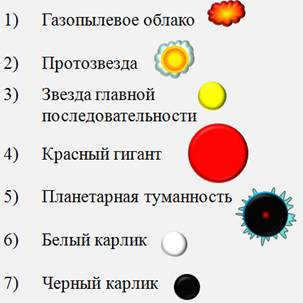
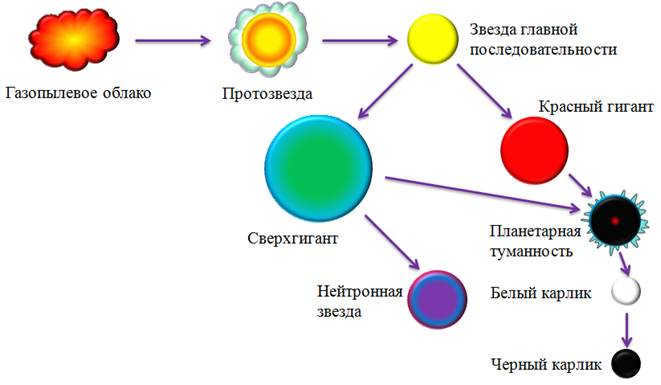
There are numerous galaxies within the Universe that have been observed to be undergoing expansion. This indirectly supports the concept of an expanding Universe. By utilizing this model and determining the distances to various galaxies, scientists have been able to calculate the radius of the observable Universe using Hubble’s law. Additionally, this law has been used to estimate the approximate age of the observable Universe. However, the origins of the Universe still remain a mystery. Presently, no definitive answer exists for how the Universe came into existence. The dispersal of galaxies resembles the explosion of matter, leading to the adoption of the Big Bang theory to explain the expanding Universe. The Big Bang theory.
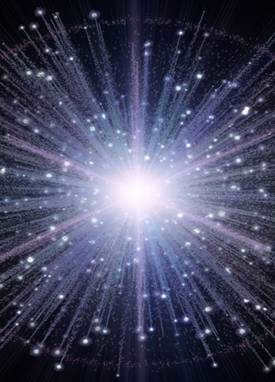
The Big Bang theory is widely accepted as the explanation for the early development of the Universe, specifically the beginning of its expansion. The field of study that focuses on the evolution of the universe is known as cosmology. Another significant cosmological model is the hot Universe model. This particular model describes the initial stages of the Universe. The density and temperature of the Universe shortly after the Big Bang were incredibly high, making the existence of galaxies and stars impossible. However, as the Universe continued to expand, its temperature and density decreased, allowing for the formation of the first stars and, eventually, galaxies.
Aside from the events that have unfolded in the universe thus far, its future holds just as much intrigue. Various perspectives exist on this topic, contingent upon the universe’s mass, energy, density, and rate of expansion. Based on present estimations, the critical density of matter can be determined using the following formula:
By inputting all the necessary constants into this equation, we can ascertain that the universe’s critical density amounts to

Furthermore, not too long ago, the idea of dark energy emerged as an explanation for the observed acceleration in the expansion of the Universe. Dark energy refers to a cosmological constant, which represents a constant energy density that pervades the entire Universe. Put differently, the presence of dark energy indicates that a true vacuum does not exist. As of now, there is no solid empirical evidence that disproves the existence of dark energy.
Undoubtedly, this subject matter exceeds the boundaries of school physics, however, let us examine the primary phases of the Universe’s development and humanity’s current understanding of it. As the Universe has expanded since the occurrence of the Big Bang, its development can be divided into expansion phases. The initial stage, known as the Planck epoch, encompasses the period when the laws of modern physics commence and extends until the inflationary stage, during which gravitational interaction separates from other forms of interaction. The inflationary stage signifies a period of rapid expansion and intense heating of the Universe. Subsequently, the radiative dominance phase occurs, serving as the primary developmental stage of the early Universe. During this phase, various types of radiation arise, temperature decreases, additional forms of interaction emerge, and energy transforms into mass, thereby generating quarks and the emergence of matter. It is during this phase that the chemical elements we presently recognize are formed. Following this phase is the era of matter dominance, wherein electromagnetic radiation dissociates from matter and the formation of stars and galaxies commences. Finally, the Universe enters a phase characterized by dark energy dominance, which represents the current epoch.
It is evident that numerous inquiries still persist, and it remains uncertain whether comprehending the origin of the Universe from within it is even achievable. However, the fundamental phases of stellar development have been explored at present. Following the collapse of a gas-dust cloud due to gravitational forces, a protostar materializes. Once the protostar’s core temperature reaches a certain threshold, a thermonuclear reaction commences, transforming the protostar into a main-sequence star. Subsequently, when the star depletes its hydrogen supply, heavier elements begin to synthesize from helium. This causes the star to expand and assume the form of a red giant or supergiant. Afterward, several potential outcomes are possible, contingent upon the star’s mass. Either the star dissipates its outer shell and gives rise to a planetary nebula, with the remaining core transforming into a white dwarf, or the star undergoes a transformation into a neutron star or black hole.
Currently, scientists explain the development of the universe through the concept of the Big Bang and the model of a hot Universe. Furthermore, recent observations indicate that the Universe is expanding at an accelerating rate. Various theories exist regarding the future of the Universe, but none of them can be definitively proven given the current state of scientific knowledge.
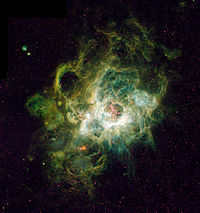 The Formation of Stars
The Formation of Stars
The life cycle of a star initiates within a colossal molecular cloud, also referred to as the stellar nursery. The vast majority of the seemingly “empty” expanse in a galaxy is actually populated with between 0.1 and 1 molecule per cm³. Conversely, a molecular cloud boasts a density of approximately one million molecules per cm³. Owing to its immense proportions, spanning 50 to 300 light-years, the mass of such a cloud surpasses that of the Sun by a magnitude of 100,000 to 10,000,000.
As a result of the resulting disparities, the molecular gas pressure is rendered ineffective in halting additional compression, prompting the gas to congregate around the future star’s center due to the gravitational forces of attraction. This process occurs over a particular time span, such as years for the Sun.
As per the virial theorem, half of the gravitational energy that is released is utilized to heat up the cloud, while the other half is converted into light radiation. In the case of clouds, the pressure and density increase towards the center, resulting in a faster collapse of the central region compared to the periphery. As compression continues, the photons’ free path length decreases, causing the cloud to become less transparent to its own radiation. Consequently, the temperature rises at a faster rate along with an even more rapid increase in pressure. Eventually, the pressure gradient counterbalances the gravitational force, leading to the formation of a hydrostatic core with a mass roughly equivalent to 1% of the cloud’s mass. At this point, the globule is not visible as it is opaque in the optical range. The subsequent evolution of the protostar involves the continuous accretion of matter that falls onto the nucleus’ “surface,” causing it to grow in size. Eventually, the freely moving matter in the cloud is depleted, resulting in the star becoming visible in the optical range. This stage is considered to mark the end of the protostellar phase and the beginning of the young star phase.
The scenario mentioned above holds true only if the molecular cloud is not in rotation, but each of them possesses some degree of rotational momentum. As per the principle of conservation of momentum, as the cloud’s size diminishes, its rotational velocity escalates, and at a specific point, the matter ceases to rotate as a unified entity and separates into layers that continue collapsing independently. The quantity and masses of these layers are contingent upon the initial mass and rotational velocity of the molecular cloud. Various systems of celestial bodies, such as star clusters, binary stars, and stars with exoplanets, are formed based on these parameters.
Emerging Celestial Bodies
The phenomenon of celestial bodies coming into existence can be explained in a unified manner, yet the subsequent phases of their growth are largely determined by their mass, with the chemical makeup only becoming relevant towards the later stages of stellar evolution.
Emerging Celestial Bodies with Low Mass [
When young stars with low mass (up to three solar masses) are on their way to becoming main sequence stars, they are completely convective. This means that the convection process occurs in all parts of the star. These stars are still in the protostar stage, where nuclear reactions are just starting and the radiation is mainly caused by gravitational compression. Although the star has not yet reached hydrostatic equilibrium, its luminosity decreases at a consistent effective temperature. On the Hertzsprung-Russell diagram, these stars follow a nearly vertical path known as the Hayashi track. As the contraction slows down, the young star gets closer to the main sequence. These types of stars are associated with T Taurus-type stars.
The characteristics of lower-mass stars upon reaching the main sequence are still unknown, as the age of these stars during their youth surpasses the age of the Universe. Our understanding of the evolution of these stars relies solely on numerical calculations and mathematical modeling.
As the star contracts, the degenerate electron gas experiences an increase in pressure. Once the star reaches a certain radius, the compression halts, preventing further growth of the central temperature caused by compression and leading to a decrease in temperature. However, this phenomenon does not occur for stars smaller than 0.0767 [3] [4] solar masses. In these cases, the energy released from nuclear reactions is insufficient to balance the internal pressure and gravitational compression. These “non-stars” emit more energy than is produced through nuclear reactions and are classified as brown dwarfs. Their fate involves constant compression until the pressure of the degenerate gas stops it, followed by gradual cooling and the cessation of all initiated nuclear reactions.
Emerging stars with intermediate mass
Emerging stars with intermediate mass (2 to 8 times the mass of the Sun) evolve in a similar manner to their smaller counterparts, with the exception that they lack convective zones until they reach the main sequence.
These types of objects are connected with what are known as Ae\Be Herbig stars, which are irregular variables with a spectral type of B-F0. They also display disks and bipolar jets. Their lapse rate, luminosity, and effective temperature are significantly higher than that of T Taurus, which means they effectively heat and disperse the remnants of the protostellar cloud.





